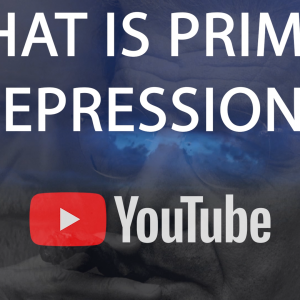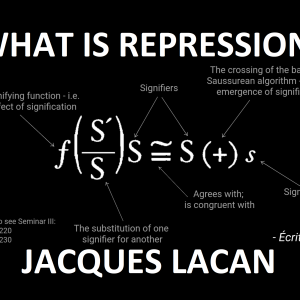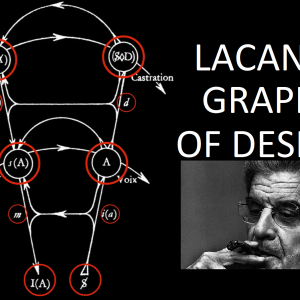Lessons from Lacan’s Practice – Everyday Psychoanalysis, from the Classroom to the Boardroom (III)
When psychoanalysis was still in its infancy there were a lot of people interested in practicing it. They wanted to train as psychoanalysts but there was no textbook or guidelines for how they should go about it. So naturally they turned to Freud.

And so by 1911, when this photo was taken, Freud was being pressured to write just such a textbook.
But he refused. A smart move, considering the inherent danger of encouraging the reduction of his still tentative, cautious theorisations to a paint-by-numbers psychoanalysis.
Let’s think about that for a moment. There was a time when no one knew what it meant to be a psychoanalyst, or to practice psychoanalysis. And the one person that they hoped could tell them, refused. So who writes the rulebook of psychoanalysis? And are the limits of its terrain, the terms of its practice, still up for grabs?
When Freud did eventually publish what have become known as his ‘Papers on Technique’ he kept things short and simple. He began what he had to say not with an explication of psychoanalytic theory but with an analogy to something from everyday life: chess.
With these opening lines of his 1913 paper ‘On Beginning the Treatment’ Freud says – modestly – that while he thinks he can offer would-be analysts advice about the opening and closing moves of a psychoanalysis, he refrains from proscribing what should happen in between.
Lacan never wrote a textbook on psychoanalysis. But he picked up on what Freud said and zeroed in on the opening and closing moves of a psychoanalytic session, or even the analysis itself. And the tactic that Lacan employed more than any other was that of surprise.
The testimonies of his former patients are rife with tales of unexpected beginnings or endings.
Let’s look at three of them. The first describes the opening of a session, the second a closing, and the third comes from outside Lacan’s consulting room, in which he both opened and closed the encounter at the same time. In each case, Lacan plays a surprise move.
He plucked up the courage to call for an initial consultation.
– “It’s so and so from such and such town, I’d like to come and see Dr Lacan”
– “One moment”, a female voice responds, “I’ll pass you over to Dr Lacan”.
Various noises, whispers, then, in a warm tone,
– “Ah, cher, it’s you! I know your books well, I’ve read you, I know your work…”
At the other end of the phone, the guy is embarrassed. Does he hang up? Does he play along?
– You’ve misunderstood, Monsieur. it’s not me,… I… It’s not…
– But of course it’s you, cher! Come and see me tomorrow at 2.
(Jean Allouch, Les Impromptus de Lacan, p.82)
This is obviously a feint on Lacan’s part, but the surprise it must have elicited in his would-be patient is unmistakable. What’s revealing is that instead of simply getting out his diary and formally allotting him a slot, Lacan plays out an almost pantomimic little game. What this does however is to provide the nervous analysand with a route into analysis which communicates to him that what he has to say has a value.
Sometimes Lacan wanted to communicate the opposite – that what his patient was speaking about was not what was really important. Again, rather than just telling his analysand that he was beating around the bush, in the following anecdote he surprises the analysand in a way that gives him the message that he ought to be talking about something else:
During his session, someone called Lacan on the telephone. Deciding that he would go and take the call, Lacan left his office, saying to his analysand:
– Don’t let that prevent you from continuing your session in my absence.
(Ibid, p.31)
The intention with these first two anecdotes is not to wrong-foot the analysand, but to generate material. Unconscious content is not yielded willingly, and does not announce itself as such. If the ego’s function is to block associative paths, Lacan’s use of the element of surprise opens them back up. The disruptive power of a surprise means that the ego cannot fight on two fronts at once, at the same time blocking unconscious associative material and reacting to what was unforeseen. The third anecdote:

A restaurant. Lacan is sitting at a table, waiting…. Roman Polanski who, in effect, having invited him there, is running late, and quite a bit late at that…
Then, even so, finally, the filmmaker makes his entrance. A little man, showing off to everyone and to Lacan, by being accompanied by an entourage of two stunning women who are way out of his league. Here, our script notes: certain heads turn in the crowd.
The three of them sit making themselves comfortable at the table, silence, under which Lacan emits an incredibly deep sigh, no less noticed than by Polanski’s entourage. Lacan, then, gets up, and definitively leaves the restaurant, leaving the dear Roman stuck there, with his two girls.
(Ibid, p.241)
In this account of a meeting with the film director Roman Polanski Lacan’s reaction is brilliant. Polanski clearly arranged the meeting so that he could use Lacan as a prop to impress the girls he brought with him but Lacan saw through this instantly, belittling him by sighing heavily, audibly to the girls, before taking his leave. Polanski is left to ponder his predicament with the girls at his side, themselves left to ponder Polanski’s pulling power.
Lacan’s use of the element of surprise goes to the heart of one of the key areas of controversy about Lacan and his practice. Indeed, the very reason he was kicked out of the International Psychoanalytical Association in 1953.
Lacan’s sessions were notoriously short thanks to his use of punctuation to bring them to a close. By abruptly cutting his analysands off Lacan was aiming to produce a disorientating effect that forced them to question the significance of what it was they had said or done immediately before he intervened. This in turn would generate more associative material which meant that the work of analysis could effectively continue in between sessions. As Lacan justified himself to one analysand who complained, “The cut is part of speech” (ibid, p.101).
Many commentators are cynical of this, and some even claim that the short sessions were a means through which Lacan sought to extort money from his analysands. One analyst even joked that Lacan liked short sessions because he was claustrophobic (ibid, p.191). Despite the controversy this method aroused, it is a practice with a noble pedigree. Indeed, there are indications from Freud’s own analysands that he practiced it too.

In 1920 his later translator, the witty and well-connected Englishman James Strachey, arrived in Vienna for an analysis with Freud. He wrote back to his brother in London, the Bloomsbury Set writer Lytton, with a valuable account of what a psychoanalytic session with Freud was like:
Notice here how Freud is described as employing precisely the kind of punctuation to his patient’s discourse that Lacan was criticised for. As for Lacan himself, speed and precision were the keys to punctuation. Here’s two short anecdotes from his practice that demonstrate this nicely:
The analysand:
– I don’t know…
Lacan:
– Don’t worry about it, we’ll know soon.
(Les Impromptus de Lacan, p.103).
– In cutting my speech like that, you want….?
– That’s it!
(Ibid, p.111).
One of Lacan’s analysands, the former President of the World Association of Psychoanalysis, Eric Laurent described Lacan employing “A type of punctuation that never failed to hit home, touching some central core of your being”:
Punctuation decides the meaning. A sentence doesn’t end until you punctuate it. Moreover, it’s worth noting that Freud recognised this effect of punctuation in a wider context, believing it to be characteristic of the onset of neurosis. He called this Nachtriglichkeit in German, which Lacan translated into French as apres-coup, and for which Laplanche chose the English neologism ‘afterwardness’.
So much for beginnings and endings, but what about the middle, everything that plays out in the course of a psychoanalysis?
Here, a psychoanalyst faces the same problem as anyone outside the psychoanalytic setting who is engaged in a sustained conversation – the danger of getting caught up in a cauldron of speech.
How do we know what’s important in what someone says?
Freud’s answer to this is simple – follow any path, any thread of speech and it will lead you to what’s important, by whatever circuitous route.
To describe this process, Freud again turns to chess. Describing the way he perceived the unconscious to be structured – a “concentric stratification of the pathogenic psychical material” – the analyst has to direct the meandering course of the analysand’s discourse to,
When we think about the monotonous middle of a psychoanalysis – or in fact any conversation – punctuation must be matched with pace. This is true within psychoanalysis and without it, and Lacan’s practice gives us lessons applicable to any social encounter.
The fascinating thing about Lacan’s interventions quoted above is that his timing was impeccable. His interjections were quick and precise, almost surgical. But speed is not the only currency in Lacanian technique, and speed does not have to mean rapidity. A controlled pace might entail slowed-down speech, a stilted cadence, or a hesitation before certain words.
Based on what we know about Lacan’s practice we can make two inferences about why pace is important.
Firstly, changing the pace of speech gives the other person a sense of the importance of their own words, an indication that what they say has a value. When someone speaks slowly, in a measured and considered way, it is as if they take more care with what they say, signalling that words have some weight. In a job interview, on a date, or at a meeting with a co-worker, the same principle, and its application – controlled pace – applies.
Secondly, pace can be used to slow the other person down. The Lacanian rationale for this is that a change in the pace of speech can refocus an interaction from the imaginary register to the symbolic. It dilutes the aggressivity incumbent in the imaginary register, utilising the effect of the symbolic to temper its irresistible pull, away from the destructive and aggressive effect of mirroring and mimetism that Lacan was so interested in during the 1930s, ’40s and ’50s. The applications of this Lacanian lesson beyond the consulting room are obvious. Think of the effect of changing your pace or tone of voice to a more measured, calm, relaxed style when a conversation at work or in a bar gets heated.
Again, one of Lacan’s former analysands, Guy Briole, testifies to what this felt like in his analysis with Lacan in the mid-1970s:
Silence is a kind of punctuation. We are looking at silence last as it is perhaps the most effective of all Lacanian techniques.
Eric Laurent has described Lacanian silence in a particularly beautiful way:
Silence is a technique that is most effective because of its emptiness, its minimalism – you simply don’t have to do anything. But this emptiness requires a discipline to exert the kind of precision, timing and control that we have seen above in the other tactics that Lacan used.
Outside of a psychoanalytic setting, silence is an incredibly effective technique in everyday life for the very simple reason that most people experience cuts, abrupt stops and prolonged silences as brutal and profoundly disturbing. To be silent when the other person expects you to speak is to play on the fundamental but unspoken rule of conversation – that it won’t stop until it ends politely. And what’s worse, it switches the emphasis on the other person to speak: silence is experienced by most people as a call to speak.
Sometimes this is used to devastating effect at psychoanalytic conferences and seminars. The talk ends, the speaker calls for questions, there is silence. Rather than break this with some mundane patter or elaboration, the speaker will just let it hang, allowing the silence to go on. After a while, someone in the audience will be unable to bear it any longer and will pipe up with a question – or, more usually, a statement – anything to break the silence.
But silence is not just meant to unnerve. Silence can be attentive as well as disruptive. This is the lesson we can draw from this beautifully concise anecdote from a control that Lacan oversaw:
– But, Monsieur, this young man (the analysand she is consulting Lacan about) comes to me three or four times per week, tells me his stories to no end, pays me and goes. What is it that I have to give him in exchange?
– Your silence!
(Les Impromptus de Lacan, p.139).
Rather than an ‘active intervention’, the lesson from Lacan’s practice is that there is such a thing as inactive intervention. Listening is not a passive activity, and not saying anything – being silent – does not imply disinterest. For Lacan, nothing is something. In Seminar VII he talks at length about creation ex nihilo, using the example of how a pot or vase is only defined by the fact that its form is shaped around an emptiness (Seminar VII, p.115). And in describing the analyst as like a tornado, with emptiness as his or her centre, Laurent’s quote above expresses precisely this idea. Indeed, elsewhere Laurent describes the aim of psychoanalysis as to afford the subject a place for “the verification of the colour of emptiness surrounding jouissance in the human being” (‘From saying to doing in the clinic of drug addiction and alcoholism’, in Almanac of Psychoanalysis – Psychoanalytic stories after Freud and Lacan, p.138-139).

Bringing this lesson back to everyday life, learning when to shut up is a discipline that it is hard to master, but it has the effect of giving the other person the sense that it is they who should speak. This is a lesson Lacan himself learned from someone else – the Swiss psychiatrist Ludwig Binswanger, and it’s with the following story that we’ll end:
A very honorable bunch is brought together to celebrate Ludwig Binswanger’s 80th birthday. We’re in Switzerland.
Because Lacan all of a sudden appeared, someone asked him to participate in a symposium.
– It’s clearly evident, he responds, that I have nothing to say.
Whereby, each of the participants having spoken for exactly ten minutes, he keeps, for him, the speech up to this point where, after three quarters of an hour of the address, he remarks that:
– …. well, in the end, he does have a lot to say.
It’s here that Binswanger, who is presiding over the session, cuts him off by saying:
– I’m starting to learn something of great importance: the fact of having nothing to say is the great secret of eloquence.
With this, Lacan looks up and is very enthused by this remark. He quickly writes it down in huge letters on a piece of paper as if to put it on display. He then asks Binswanger, and gets from him, a signature of his statement. Then disappears with his trophy.
(Les Impromptus de Lacan, p.246).
By Owen Hewitson, LacanOnline.com

All content on LacanOnline.com is licensed under a Creative Commons Attribution-NonCommercial 3.0 Unported License.




Is the book by Jean Allouch ” Les Impromptus de Lacan” often referred to available in English?
Unfortunately not yet, Matt
Si seulement je pouvais lire le français! (Thanks Google translate). It sounds like an utterly fascinating book.